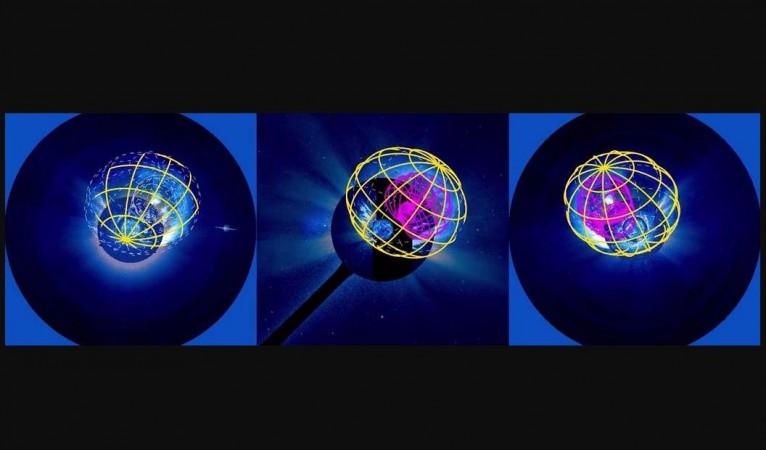
Scientists have combined data from three NASA satellites to develop new models that recreate coronal mass ejections (CMEs) and shocks associated with them in 3D. The newly-developed models are expected to help scientists see how these shocks actually propagate from the Sun.
Interplanetary shocks set off by CMEs work much like ships forming bow waves as they move through the water. These shocks occur when CMEs, erupting from the Sun at extreme speeds, create a wave of high-energy particles that can lead to space weather events around Earth, endangering spacecraft and astronauts.
Scientists, therefore, seek to better understand how such shocks develop and accelerate so that they can predict how they might create disruptions in near-Earth space.
To do that, scientists used observations of two different eruptions from three spacecraft, including the Solar and Heliospheric Observatory (SOHO) and NASA's twin Solar Terrestrial Relations Observatory (STEREO) satellites. The two CMEs, they observed, erupted in March 2011 and in February 2014.
The scientists later fit the CME data to the new models to create the 3D structure and the trajectory of each CME and shock. The new models included one called the "croissant" model for the shape of emerging shocks, and the other called the "ellipsoid" model for the shape of expanding shocks.
According to NASA, the three sets of satellite data, with each of them spacing nearly evenly around the Sun, helped the scientists use their models to recreate a 3D view, which confirmed previous theoretical predictions of a strong shock near the CME nose and a weaker shock at the sides.
In addition, the 3D information also helped the scientists reconstruct the journey of shocks through space as they travel away from the Sun.
"The modeling helps scientists deduce important pieces of information for space weather forecasting — in this case, for the first time, the density of the plasma around the shock, in addition to the speed and strength of the energized particles," NASA said in a statement.
The latest results appeared in a research paper published in the Journal of Space Weather and Space Climate on February 13.
Check out the video below:











